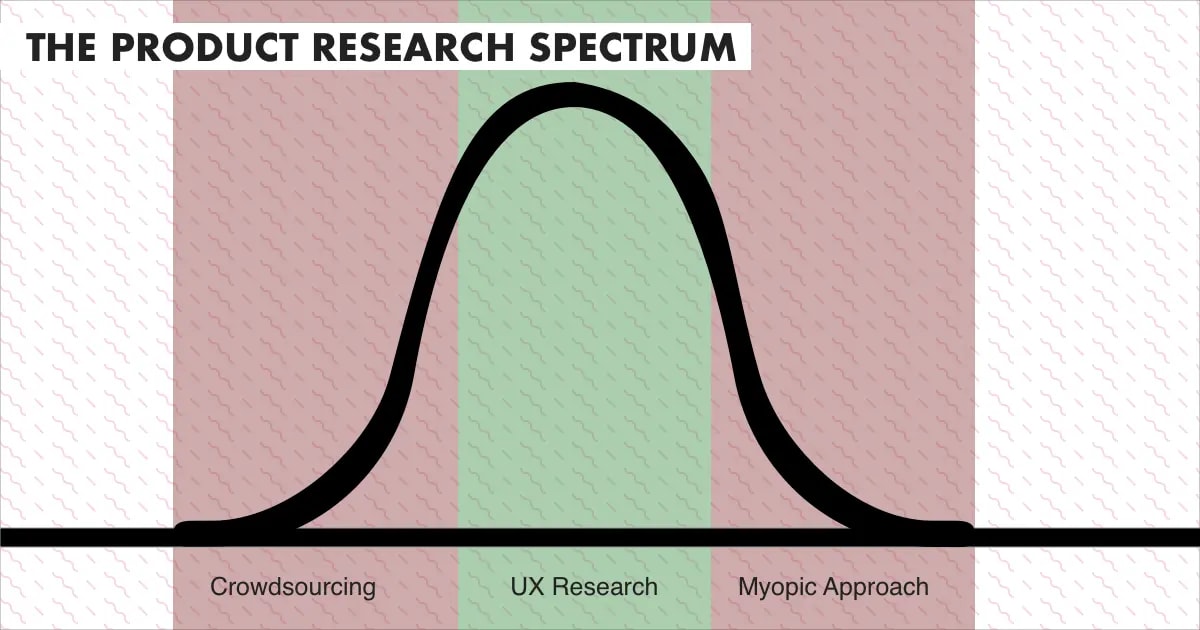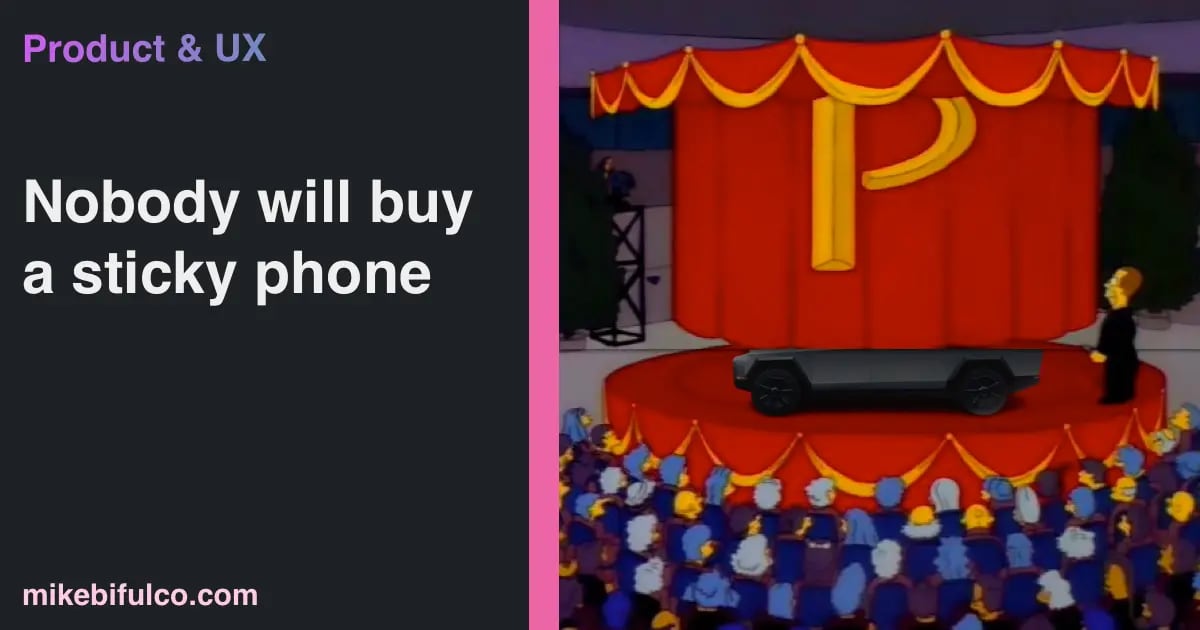The product design spectrum: crowdsourcing, user research, and the myopic approach
Crowdsourcing ideas is a great way to hear opinions from a wide variety of people. But it's not a great way to design a product, and it's definitely not user research -- let's talk about why.

Hawkeye: ZTE's sticky phone, and the double-edged sword of crowdsourcing
In 2016, Chinese smartphone manufacturer ZTE launched a crowdsourcing campaign to find out what features people wanted in their next smartphone. They asked people to submit ideas, and then vote on the ideas that they liked best, with the promise that the most popular ideas would be incorporated into the next phone.
Here's a snippet from a Trusted Reviews article about the campaign:
Earlier this year, in what could be the best or worst decision ever made, Chinese smartphone maker ZTE turned to the general public for ideas for its next smartphone.
(cue foreboding music)
As you might imagine, after asking The Internet™️ to submit ideas for something, they ended up with many varied responses. The result was a full on fever-dream of a phone, called Hawkeye. In addition to an array of typical features you'd expect from a smartphone, it also had:
- Eye tracking: the phone would scroll up and down based on where you were looking.
- A self-adhesive back: the phone would stick to any surface, like a wall or a window, so you could take selfies or watch videos hands-free
- A vaguely defined split screen feature: despite what you might guess, this was described as "...[a] feature that allows only the user to see what's on-screen". I'm honestly not sure what that means.
Don't get me wrong, if done well, at least one of these features could be really useful for accessibility. You could certainly never sell me on carrying a sticky phone in my pocket (or holding one up to my face, for crying out loud). It's a confusing grab-bag of features that don't seem to have much in common, and it's hard to imagine how they would work together.
So, how did it turn out? Well... it didn't. After crowdsourcing ideas and building prototypes of the phone, ZTE launched a kickstarter campaign, likely in an effort to gauge interest in the phone. They raised $36k of their $500,000 goal, and the project was cancelled.
So what happened? Why did this campaign fail so spectacularly? Well, I think the nature of campaigns like this on the internet is not to find the best ideas, but to find the most popular ideas. And the most popular ideas are not always the best ones, especially when there's so much clout to be gained from having your idea chosen (oh hey, boaty mcboatface, didn't see you there!).
Think about it - how many of your least favorite products feel like they were designed by a committee? I can think of a few examples of products that I used to love that have gotten bloated and confusing, particularly after an enterprise-scale company acquired them.
The myopic approach: Why automakers don't have just one designer
On the opposite side of the "let's crowdsource a product", there's the myopic approach. Putting trust in just one person to design a product is exceedingly rare. To be successful, that person has to have an acute ability to understand the needs of the people who will use the product, and to design something that meets those needs, while also being technically feasible and financially viable.
This has happened in the automotive industry -- a place where R&D costs are immense, and the cost of a failed product can be catastrophic.
Imagine that: an auto manufacturer trusting one person to design a car for broad public adoption, with a host of features that aren't exactly cohesive, a design that's... unique, and a pricetag that's higher than the competition.
The result is an odd amalgum of features that reveal a window into just-one-person's vision of what a car should be. This results in a list of headline features that nobody was asking for, an incoherent, polarizing, and difficult-to-manufacture design, and a product that has no clear target audience.
All with the capacity to bankrupt a company, and all because somehow all the decision-making power was given to a single, thoughtless, out-of-touch idiot, who was allowed to run amok with their own ideas.
This is why we shouldn't throw rocks at a (window) to see what sticks.
Conclusion: listen to your users, but don't let them design your product
Feedback is a gift - always. But setting yourself up to receive feedback that is actually useful is a skill. Taking a lazy or naive approach to feedback can be a costly mistake, especially if you're not able to separate what people are saying from what they're telling you.
Of course, the other side of the spectrum is a myopic approach - not collecting data or feedback at all, and going with your gut to product development that doesn't take into account the needs of your users.

Both of these approaches are dangerous, and both can be avoided by taking a more thoughtful approach to product development. User research, user testing, and a healthy dose of skepticism are all important tools in your product development toolbox. These are all techniques that require you to be thoughtful about the way you collect feedback, and to interpret the feedback you receive, rather than blindly accepting it.
Even that takes practice, and can lead to mistakes. But it's a lot better than the alternative.
You may want to check these out
- ⛑️ I published an article on adding self-healing URLs to your Next.js site, as a way to improve site accessibility, SEO, and user experience. It was inspired by a video from youtuber Aaron Francis, showing how to accomplish the same thing in Laravel
- ✂️📄🪨 Legendary YouTuber CGP Grey's recent video Can You Win this One-in-a-Million Game? is surprisingly one of the most awe-inspiring, creative, existentially challenging YouTube projects I've ever experienced. I won't spoil it for you -- but it's worth your time and attention.
Thanks for reading!
Hey, be good to yourself - December is a tough month for a lot of people, for a wide variety of reasons. I'm here to tell you that you're doing great, and we'll be unwrapping a brand-spanking-new year in just a few weeks. Keep the faith, and as a wise man once said, peace be the journey.

